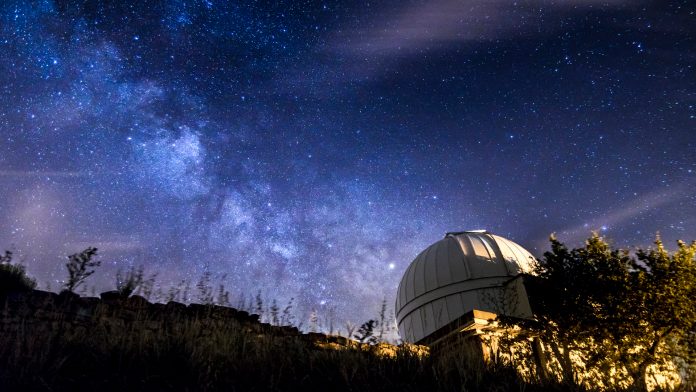An international team of researchers from the Event Horizon Telescope (EHT) collaboration has successfully imaged the radio galaxy Centaurus A in exceptional detail.
The discovery, led by Michael Janssen from the Max Planck Institute for Radio Astronomy in Bonn and Radboud University Nijmegen, has provided fascinating insights into Centaurus A – a nearby radio galaxy to Earth, capturing images of its centre. The Event Horizon Telescope is renowned for groundbreaking discoveries, having previously obtained the first image of a black hole in the Messier 87 galaxy.
The New Event Horizon Telescope discovery has identified the location of a central supermassive black hole in Centaurus A, in addition to the birth of a gigantic jet, which peculiarly, only the outer edges of are emitting radiation, challenging current theoretical models of jets.
The research is published in Nature Astronomy.
Investigating the enigmatic Centaurus A
In terms of radio wavelengths, Centaurus A is one of the brightest and largest observable objects in the night sky, being discovered in 1949 as one of the first known extragalactic radio sources. Centaurus A has been analysed comprehensively throughout the entire electromagnetic spectrum by employing a plethora of radio, optical, infrared, X-ray, and gamma-ray observatories. Deep in the heart of the galaxy resides a black hole with the mass of 55 million Suns, placing it in between the mass scales of the Messier 87 black hole – a colossal six and a half billion Suns – and the black hole in the centre of our galaxy, around four million Suns.
Astronomer Micheal Janssen said: “This allows us, for the first time, to see and study an extragalactic radio jet on scales smaller than the distance light travels in one day. We see up close and personally how a monstrously gigantic jet launched by a supermassive black hole is being born.”

In comparison, prior high-resolution examinations of the Centaurus A jets were not as sophisticated, with the novel images achieving a tenfold higher frequency and sixteen times sharper resolution. The power of the EHT can proficiently link the vast scales of the source, which are as big as 16 times the angular diameter of the Moon on the sky, to their origin near the black hole in an area roughly the width of an apple on the Moon when projected on the sky, a magnification factor of one billion.
Investigating jets
Supermassive black holes – like the one in the centre of Centaurus A – feed off gas and dust that are collected by their substantial gravitational pull, with the process exerting enormous amounts of energy, which make the galaxy ‘active’, with the matter in proximity to the edge of the black hole falling in. Contrastingly, some of the surrounding particles before they are engulfed, instead being blown out far into space. This process is a jet, one of the most mysterious features of galaxies.
Traditionally, astronomers have utilised various models to understand how matter behaves around black holes; however, they still do not know how jets are launched from their central region and extend over scales larger than their host galaxies without dispersing out, with the Event Horizon Telescope potentially providing an answer.
The novel image demonstrates that the Centaurus A jet is brighter at the edges compared to the centre, a phenomenon that has been observed in other jets, although not this pronounced.
Matthias Kadler, TANAMI leader and professor for astrophysics at the University of Würzburg in Germany, said: “Now we are able to rule out theoretical jet models that are unable to reproduce this edge-brightening. It’s a striking feature that will help us better understand jets produced by black holes.”









